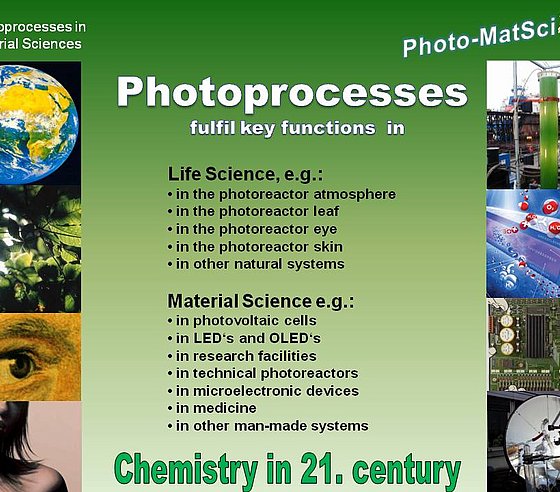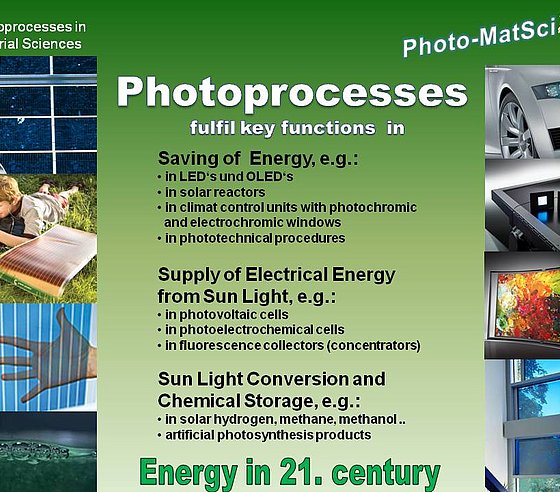2. Energy and chemistry in the 21<sup>st</sup> century


The contribution of solar light as a renewable energy source in the supply of electrical energy through photovoltaics is important, but it is by far not all that light can do. In fact, photoprocesses play key roles in the three most important energy strategies of the 21st century. The three strategies are 'increasing the energy efficiency', e. g. using LED, OLED and photochromic windows, 'the conversion of solar light into electrical energy in inorganic, organic and hybrid solar cells' and 'the production of chemical energy storage compounds from solar light by chemical solar energy conversion and storage following the example of natural photosynthesis'.
Photoprocesses also fulfill key functions in the two main research and development areas of chemistry in the 21<sup>st</sup> century, life sciences and materials science, for example in the natural photoreactors 'atmosphere', 'leaf', 'eye' and 'skin', as well as in artificial photoreactors, which are important as components of photoactive materials for photovoltaics, photoluminescence, sensor technology, nanorobots and high-resolution microscopy. Light-driven reactions are often more successful than conventional methods involving the supply of heat for synthesizing tailor-made molecules with precisely required spatial structures for medical applications. With appropriate photosensitisers and catalysts, key steps in such syntheses can be carried out stereoselectively to a high degree.
